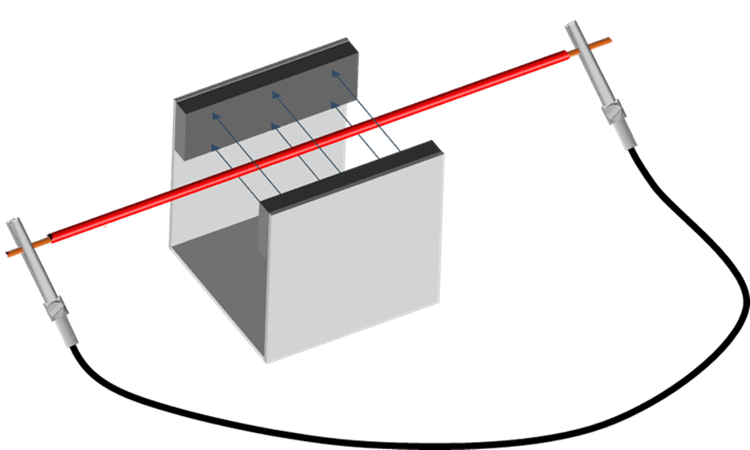Myths about teaching can hold you back
- Year 11
- OCR
- Higher
The generator effect
I can describe how different factors affect the size and direction of an induced current or potential.
- Year 11
- OCR
- Higher
The generator effect
I can describe how different factors affect the size and direction of an induced current or potential.
These resources will be removed by end of Summer Term 2025.
Switch to our new teaching resources now - designed by teachers and leading subject experts, and tested in classrooms.
These resources were created for remote use during the pandemic and are not designed for classroom teaching.
Lesson details
Key learning points
- A magnet moving relative to a wire connected in a complete circuit can cause a current to flow in the wire.
- A magnet moving in the opposite direction relative to a wire induces a current in the opposite direction.
- A magnet moving relative to a wire can cause a potential difference across the wire called the induced potential.
- Induced potential is proportional to mag. field strength and the relative speed of movement between a wire and a magnet.
- For a magnet moving relative to a coil, the induced potential is proportional to the number of turns of wire in a coil.
Keywords
Induced current - The current generated in a circuit moving relative to a magnetic field.
Generator effect - The effect of inducing a current by the relative movement of a circuit and a magnetic field.
Milliammeter - A sensitive ammeter able to measure thousandths of an amp.
Induced potential - The potential difference generated in a conductor moving relative to a magnetic field.
Common misconception
Magnets can attract or repel electric charges in a wire.
Explain that the cause of induced current is complex and is usually taught to pupils studying physics at university. At this point it is sufficient to be able to describe and predict what happens when a conductor is moving in a magnetic field.
To help you plan your year 11 physics lesson on: The generator effect, download all teaching resources for free and adapt to suit your pupils' needs...
To help you plan your year 11 physics lesson on: The generator effect, download all teaching resources for free and adapt to suit your pupils' needs.
The starter quiz will activate and check your pupils' prior knowledge, with versions available both with and without answers in PDF format.
We use learning cycles to break down learning into key concepts or ideas linked to the learning outcome. Each learning cycle features explanations with checks for understanding and practice tasks with feedback. All of this is found in our slide decks, ready for you to download and edit. The practice tasks are also available as printable worksheets and some lessons have additional materials with extra material you might need for teaching the lesson.
The assessment exit quiz will test your pupils' understanding of the key learning points.
Our video is a tool for planning, showing how other teachers might teach the lesson, offering helpful tips, modelled explanations and inspiration for your own delivery in the classroom. Plus, you can set it as homework or revision for pupils and keep their learning on track by sharing an online pupil version of this lesson.
Explore more key stage 4 physics lessons from the Electromagnetism unit, dive into the full secondary physics curriculum, or learn more about lesson planning.

Equipment
Demonstrate equipment to show induced potential or current on sensitive meters when moving magnets relative to coils of wire and/or wires relative to strong magnetic fields.
Licence
Prior knowledge starter quiz
6 Questions
Q1.Which of the following is a definition of current?
Q2.Which of the following is used to measure current?
Q3.Which of the following is used to measure potential difference?
Q4.There is a potential difference between two ends of a wire. Which of the following statements are correct?
Q5.Which of the following describes the motor effect?
Q6.Which of the following statements about cells are correct?
Assessment exit quiz
6 Questions
Q1.Which of the following is used to measure very small currents?
Q2.Which of the following describes the generator effect?
Q3.The diagram shows a piece of wire in a magnetic field, represented by field lines. In which directions can the wire be moved to make a current appear in the wire?



